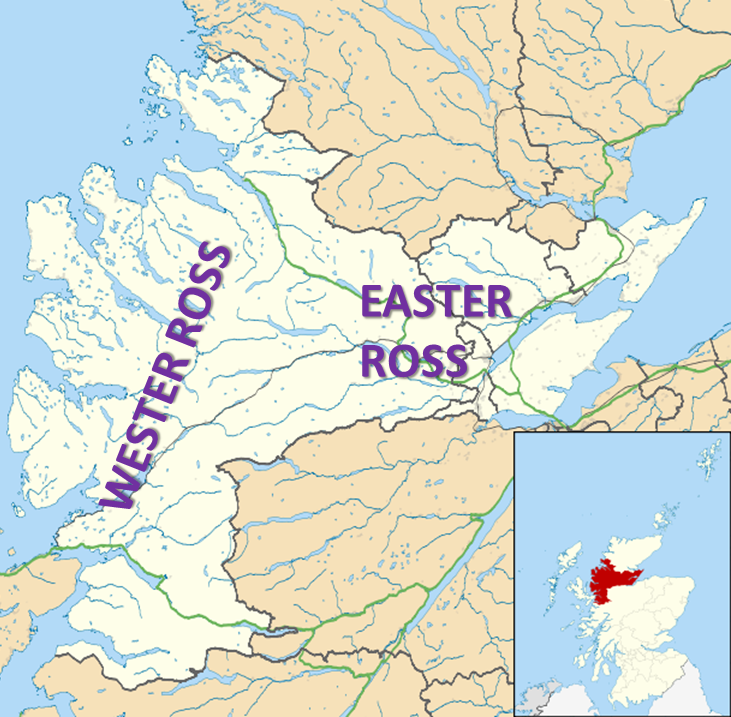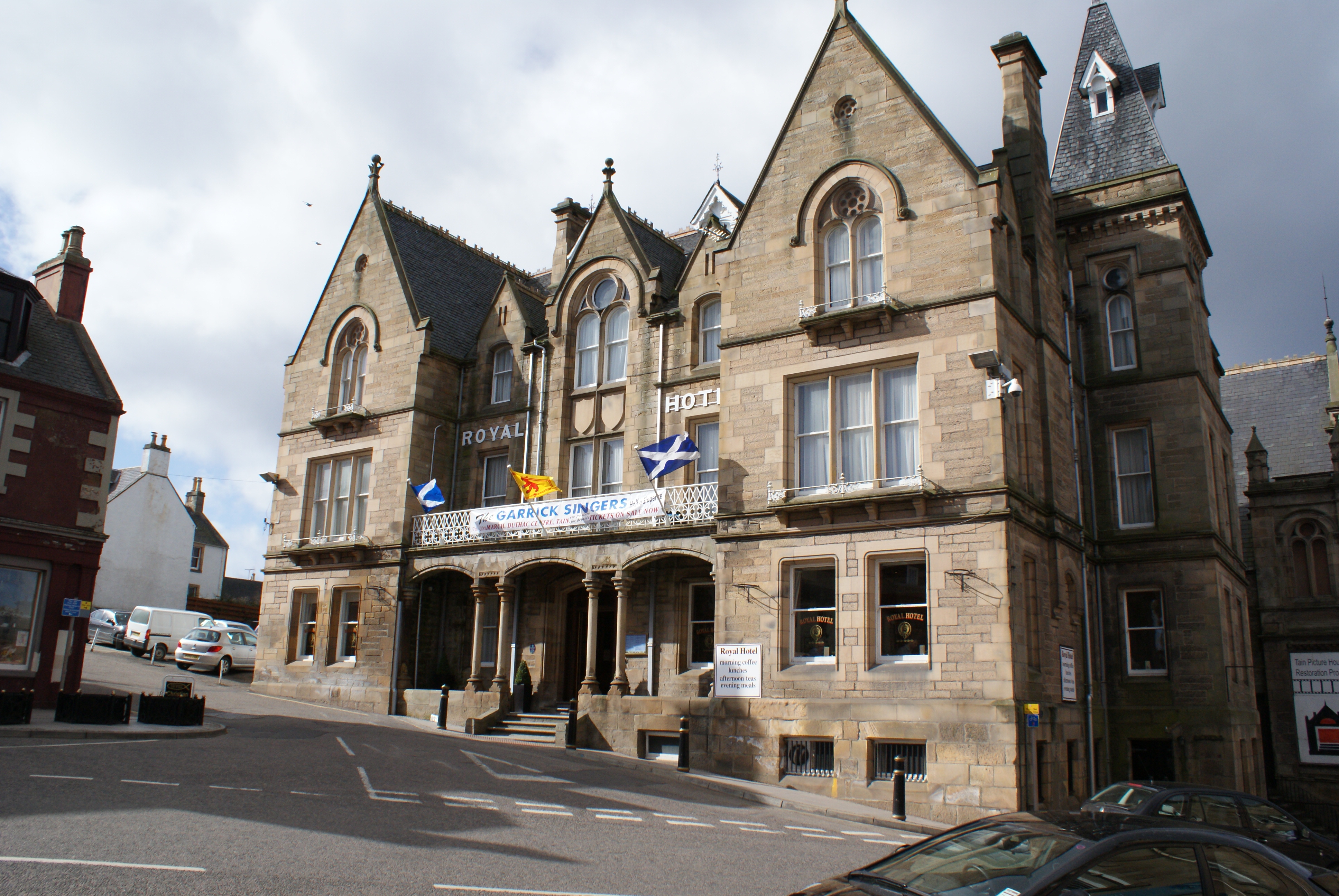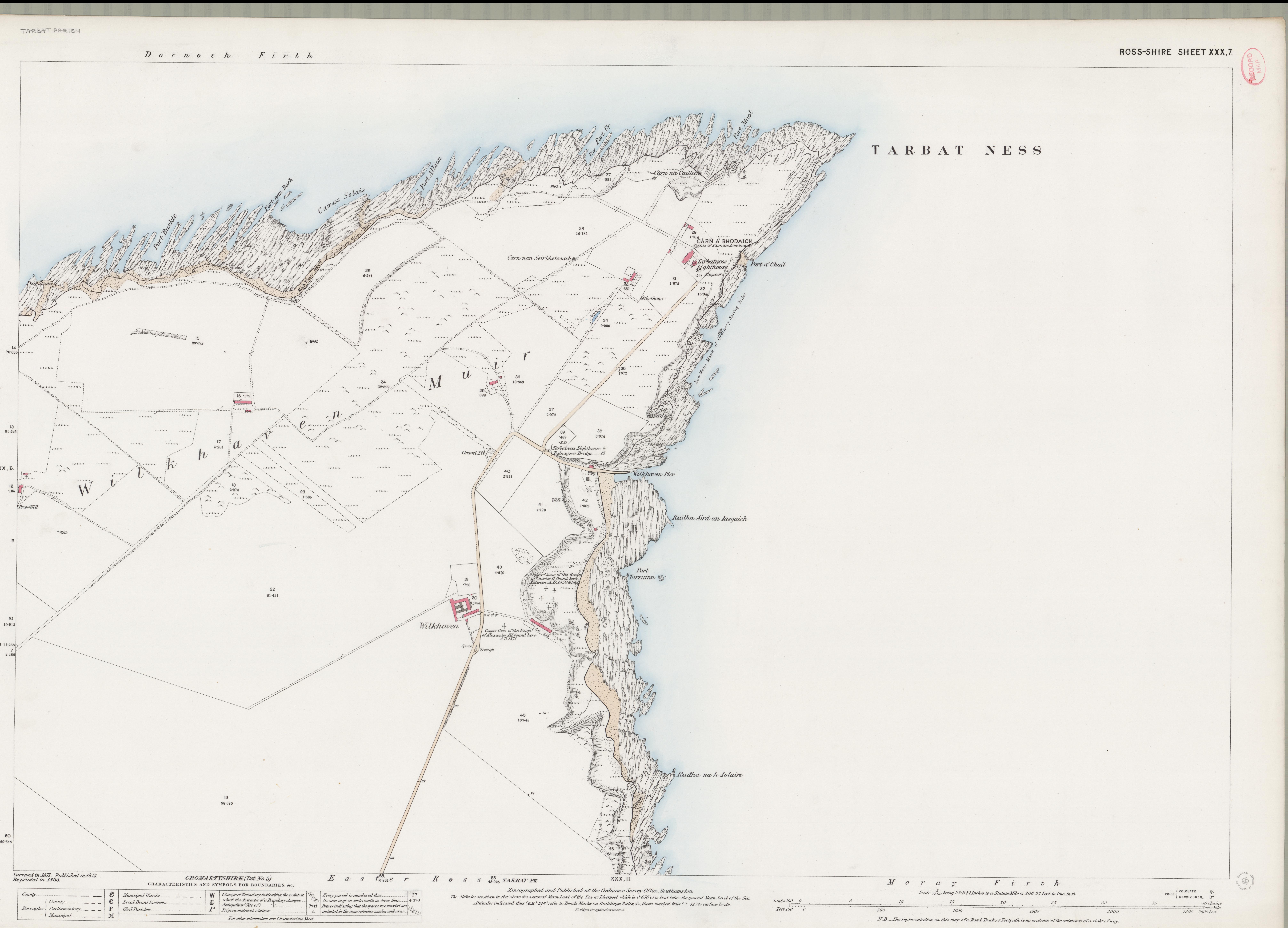|
Easter Ross
Easter Ross ( gd, Ros an Ear) is a loosely defined area in the east of Ross, Highland, Scotland. The name is used in the constituency name Caithness, Sutherland and Easter Ross, which is the name of both a British House of Commons constituency and a Scottish Parliament constituency. The two constituencies have however different boundaries. Settlements Places in Easter Ross include: * Alness * Dingwall (included in some contexts in the term ''Easter Ross'', though in some contexts it refers to the area to the north-east of Dingwall) * Evanton * Invergordon * Kildary * Milntown of Tarbat (Milton) * Portmahomack * The Seaboard villages: ** Balintore ** Hilton of Cadboll ** Shandwick * Tain Easter Ross is well known for Black Isle and its towns: Avoch, Rosemarkie, Fortrose, and Cromarty. See also * Black Isle * Ross and Cromarty * Ross-shire * Wester Ross Wester Ross () is an area of the Northwest Highlands of Scotland in the council area of Highland. The area is ... [...More Info...] [...Related Items...] OR: [Wikipedia] [Google] [Baidu] |
Milton, Easter Ross
Milton ( gd, Baile Mhuilinn Anndra), known as Milntown of Tarbat until the early 1970s, is a small Easter Ross community between Kildary and Barbaraville on Scotland's North East coast. History The Scottish clans It was a centre for oatmeal and later flax production, fed by the many surrounding farms during the heyday of the Clan Ross. According to historian R. W Munro the family that did most to extend the territory of the Clan Munro was the senior line of the numerous descendants of John, brother of George Munro, 10th Baron of Foulis.Munro, R. W. (1987). ''Mapping the Clan Munro''. Edinburgh. The Munro of Milntown family's base, Milntown Castle, was at Milntown of Meddat which was so near to Balnagown Castle that the Ross chiefs tried to stop them building there. The last of in the senior line of the Munros of Milntown was killed at the Battle of Kilsyth in 1642 and Milntown Castle was burned down by carelessness in the same year. The castle was demolished to make way for t ... [...More Info...] [...Related Items...] OR: [Wikipedia] [Google] [Baidu] |
Ross-shire
Ross-shire (; gd, Siorrachd Rois) is a historic county in the Scottish Highlands. The county borders Sutherland to the north and Inverness-shire to the south, as well as having a complex border with Cromartyshire – a county consisting of numerous enclaves or exclaves scattered throughout Ross-shire's territory. Ross-shire includes most of Ross along with Lewis in the Outer Hebrides. Dingwall is the traditional county town. The area of Ross-shire is based on that of the historic province of Ross, but with the exclusion of the many enclaves that form Cromartyshire. For shreival purposes the area was first separated from the authority of the sheriff of Inverness by Act of Parliament during the reign of King James IV, the sheriff to sit at Tain or Dingwall. Sheriffs were seldom appointed, and further acts of 1649 and 1661 restated its separation from Inverness. The 1661 act also clarified the area encompassed, based on the pre-Reformation Diocese of Ross. Sir Geor ... [...More Info...] [...Related Items...] OR: [Wikipedia] [Google] [Baidu] |
Ross And Cromarty
Ross and Cromarty ( gd, Ros agus Cromba), sometimes referred to as Ross-shire and Cromartyshire, is a variously defined area in the Highlands and Islands of Scotland. There is a registration county and a lieutenancy area in current use, the latter of which is in extent. Historically there has also been a constituency of the Parliament of the United Kingdom (1832 to 1983), a local government county (1890 to 1975), a district of the Highland local government region (1975 to 1996) and a management area of the Highland Council (1996 to 2007). The local government county is now divided between two local government areas: the Highland area and Na h-Eileanan Siar (the Western Isles). Ross and Cromarty border Sutherland to the north and Inverness-shire to the south. The county was formed by the uniting of the shires of Ross-shire and Cromartyshire. Both these shires had themselves been formed from the historic province of Ross, out of which the many enclaves and exclaves that for ... [...More Info...] [...Related Items...] OR: [Wikipedia] [Google] [Baidu] |
Black Isle
The Black Isle ( gd, an t-Eilean Dubh, ) is a peninsula within Ross and Cromarty, in the Scottish Highlands. It includes the towns of Cromarty and Fortrose, and the villages of Culbokie, Jemimaville, Rosemarkie, Avoch, Munlochy, Tore, and North Kessock, as well as numerous smaller settlements. About 12,000 people live on the Black Isle, depending on the definition. The northern slopes of the Black Isle offer fine views of Dingwall, Ben Wyvis, Fyrish and the deepwater anchorage at Invergordon. To the south, Inverness and the Monadhliath Mountains can be seen. Description Despite its name, the Black Isle is not an island but a peninsula, surrounded on three sides by the sea – the Cromarty Firth to the north, the Beauly Firth to the south, and the Moray Firth to the east. On the fourth, western side, its boundary is broadly delineated by rivers. The River Conon, which divides Maryburgh from Conon Bridge, defines the border in the north-west. The south-weste ... [...More Info...] [...Related Items...] OR: [Wikipedia] [Google] [Baidu] |
Tain
Tain ( Gaelic: ''Baile Dhubhthaich'') is a royal burgh and parish in the County of Ross, in the Highlands of Scotland. Etymology The name derives from the nearby River Tain, the name of which comes from an Indo-European root meaning 'flow'. The Gaelic name, ''Baile Dubhthaich'', means 'Duthac's town', after a local saint also known as Duthus. History Tain was granted its first royal charter in 1066, making it Scotland's oldest royal burgh, commemorated in 1966 with the opening of the Rose Garden by Queen Elizabeth, the Queen Mother. The 1066 charter, granted by King Malcolm III, confirmed Tain as a sanctuary, where people could claim the protection of the church, and an immunity, in which resident merchants and traders were exempt from certain taxes. Little is known of earlier history although the town owed much of its importance to Duthac. He was an early Christian figure, perhaps 8th or 9th century, whose shrine had become so important by 1066 that it resulted in the roya ... [...More Info...] [...Related Items...] OR: [Wikipedia] [Google] [Baidu] |
Shandwick
Shandwick ( gd, Seannduaig), a village near Tain in Easter Ross, and is in the Scottish council area of Highland, Scotland Scotland (, ) is a country that is part of the United Kingdom. Covering the northern third of the island of Great Britain, mainland Scotland has a border with England to the southeast and is otherwise surrounded by the Atlantic Ocean to .... Hilton, Balintore, and Shandwick are known collectively as the Seaboard Villages. It is well known because of the nearby Clach a' Charridh or Shandwick Stone, a Class II Pictish stone. External linksHistory Website'' - online archive of the social history of the Seaboard Villages; Hilton, Balintore, and Shandwick * Populated places in ... [...More Info...] [...Related Items...] OR: [Wikipedia] [Google] [Baidu] |
Hilton Of Cadboll
Hilton of Cadboll, or simply Hilton, ( gd, Baile a' Chnuic) is a village about southeast of Tain in Easter Ross, in the Scottish council area of Highland Highlands or uplands are areas of high elevation such as a mountainous region, elevated mountainous plateau or high hills. Generally speaking, upland (or uplands) refers to ranges of hills, typically from up to while highland (or highlands) is .... It is famous for the Hilton of Cadboll Stone. Hilton of Cadboll, Balintore, and Shandwick are known collectively as the Seaboard Villages. References External linksHistory Website'' - online archive of the social history of the Seaboard Villages; Hilton, Balintore, and Shandwick * Populated places in Ross and Cromarty {{Highland-geo-stub ... [...More Info...] [...Related Items...] OR: [Wikipedia] [Google] [Baidu] |
Balintore, Easter Ross
Balintore (from the gd, Baile an Todhair meaning "The Bleaching Town") is a village near Tain in Easter Ross, Scotland. It is one of three villages on this northern stretch of the Moray Firth coastline - Hilton, Balintore, and Shandwick Shandwick ( gd, Seannduaig), a village near Tain in Easter Ross, and is in the Scottish council area of Highland, Scotland Scotland (, ) is a country that is part of the United Kingdom. Covering the northern third of the island of Gre ... are known collectively as the Seaboard Villages. Local employment has long been based on fishing, but this is now only a small part of the local economy. Balintore has a large harbour, built c.1890. With a shop, post office and pharmacy, Balintore holds a small but friendly community. Balintore always had a very busy village hall which was a meeting point for villagers and consisted of many dances, plays, sales and the occasional whist drive. The previous village hall was knocked down and the la ... [...More Info...] [...Related Items...] OR: [Wikipedia] [Google] [Baidu] |
Seaboard Villages
The Seaboard Villages ( gd, Na Trì Port Mara) are three contiguous coastal villages, situated about 10 km southeast of the town of Tain in Easter Ross, Scotland. They face east onto the Moray Firth. Namely (from North to South): *Hilton of Cadboll - which has the pier * Balintore - which has the harbour *Shandwick Shandwick ( gd, Seannduaig), a village near Tain in Easter Ross, and is in the Scottish council area of Highland, Scotland Scotland (, ) is a country that is part of the United Kingdom. Covering the northern third of the island of Gre ... - which has the bay External links''Down to the Sea'' - online version of history book of Hilton, Balintore, and Shandwick [...More Info...] [...Related Items...] OR: [Wikipedia] [Google] [Baidu] |
Portmahomack
Portmahomack ( gd, Port Mo Chalmaig; 'Haven of My .e. 'Saint'Colmóc') is a small fishing village in Easter Ross, Scotland. It is situated in the Tarbat Peninsula in the parish of Tarbat. Tarbat Ness Lighthouse is about from the village at the end of the Tarbat Peninsula. Ballone Castle lies about from the village. There is evidence of early settlement, and the area seems to have been the site of significant activity during the time of the Picts, early Christianity and the Vikings. The village is situated on a sandy bay and has a small harbour designed by Thomas Telford: it shares with Hunstanton the unusual distinction of being on the east coast but facing west. Portmahomack lies inside the Moray Firth Special Area of Conservation with the associated dolphin and whale watching activity. The village has a primary school, golf course, hotel, a number of places to eat and a shop with a sub-post office. The nearest rail access is at Fearn railway station and the nearest ... [...More Info...] [...Related Items...] OR: [Wikipedia] [Google] [Baidu] |
Kildary
Kildary ( gd, Caoldaraigh) is a small village in Easter Ross, Ross and Cromarty, Highland, Scotland. The village is located on the Balnagown River and is bordered by Balnagown Castle and the Balnagown estate, owned by Mohamed Al Fayed, former owner of Harrods department store. The main road A9 passes close by, running parallel to the Far North Line. The only landmark visible from the A9 is Ken's Garage, which has been on the same site for many decades. Ken's Garage gets its name from the original proprietor Mr Ken Mackay. It is now owned by the Bannerman brothers. The A9 used to run in front of the garage until the road was realigned. Close by is an unusual Tudor-style lodge, known as East Lodge, attached to the Tarbat Estate. Kildary railway station served the village until its closure on 13 June 1960. It was opened on 1 June 1864 as Parkhill and renamed Kildary on 1 May 1868. The station was demolished when the A9 was realigned, although the station building remains as a l ... [...More Info...] [...Related Items...] OR: [Wikipedia] [Google] [Baidu] |


.jpg)


